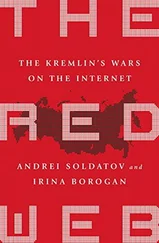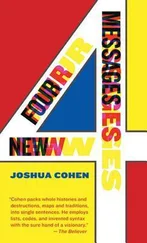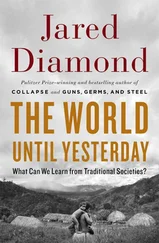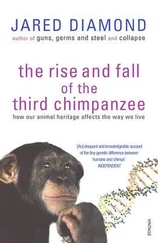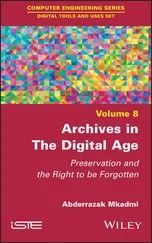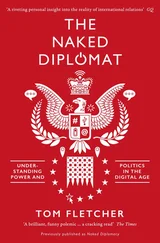Jared Cohen - The New Digital Age
Здесь есть возможность читать онлайн «Jared Cohen - The New Digital Age» весь текст электронной книги совершенно бесплатно (целиком полную версию без сокращений). В некоторых случаях можно слушать аудио, скачать через торрент в формате fb2 и присутствует краткое содержание. Жанр: Старинная литература, на английском языке. Описание произведения, (предисловие) а так же отзывы посетителей доступны на портале библиотеки ЛибКат.
- Название:The New Digital Age
- Автор:
- Жанр:
- Год:неизвестен
- ISBN:нет данных
- Рейтинг книги:5 / 5. Голосов: 1
-
Избранное:Добавить в избранное
- Отзывы:
-
Ваша оценка:
- 100
- 1
- 2
- 3
- 4
- 5
The New Digital Age: краткое содержание, описание и аннотация
Предлагаем к чтению аннотацию, описание, краткое содержание или предисловие (зависит от того, что написал сам автор книги «The New Digital Age»). Если вы не нашли необходимую информацию о книге — напишите в комментариях, мы постараемся отыскать её.
The New Digital Age — читать онлайн бесплатно полную книгу (весь текст) целиком
Ниже представлен текст книги, разбитый по страницам. Система сохранения места последней прочитанной страницы, позволяет с удобством читать онлайн бесплатно книгу «The New Digital Age», без необходимости каждый раз заново искать на чём Вы остановились. Поставьте закладку, и сможете в любой момент перейти на страницу, на которой закончили чтение.
Интервал:
Закладка:
We can already see early steps in this direction, as some companies make clear statements in policy or procedure. At YouTube, there is the challenge of content volume. With more than four billion videos viewed daily (and sixty hours of video uploaded each minute), it is impossible for the company to screen that content for what is considered inappropriate material, like advocating terrorism. Instead YouTube relies on a process in which users flag content they consider inappropriate; the video in question goes to a YouTube team for review, and it is taken down if it violates company policies. Eventually, we will see the emergence of industry-wide standards. All digital platforms will forge a common policy with respect to dangerous extremist videos online, just as they have coalesced in establishing policies governing child pornography. There is a fine line between censorship and security, and we must create safeguards accordingly. The industry will work as a whole to develop software that more effectively identifies videos with terrorist content. Some in the industry may even go so far as employing speech-recognition software that registers strings of keywords, or facial-recognition software that identifies known terrorists.
Terrorism, of course, will never disappear, and it will continue to have a destructive impact. But as the terrorists of the future are forced to live in both the physical and the virtual world, their model of secrecy and discretion will suffer. There will be more digital eyes watching, more recorded interactions, and, as careful as even the most sophisticated terrorists are, even they cannot completely hide online. If they are online, they can be found. And if they can be found, so can their entire network of helpers.
In this chapter we have explored the darkest ways that individuals will seek to violently disrupt our future world, but given that conflict and war are as much a part of human history as society itself, how will states and political movements engage in these activities to achieve their aims? We’ll now explore this question by imagining how conflict, combat and intervention are affected in a world where almost everyone is online.
1Cyber attackers cover their tracks by routing data through intermediary computers between themselves and their victims. Such “proxy” computers—which could include hacked computers in homes or businesses around the globe—appear to victims and outsiders as the sources of the attack, and it can be quite challenging to trace through many intermediary layers back to the true sources of cyber attacks. Making matters worse, an attacker can launch a Tor router on the compromised host, spewing obfuscating traffic throughout the compromised network and masking the attacker’s intentional activities.
2This will still prove difficult to achieve, depending on the nature of the crime. Kevin Mitnick, who was an infamous computer hacker, was convicted, spent five years in prison and then, as part of his probation, was forbidden to use the Internet or a cell phone. He eventually fought the restriction through the legal system and won.
3At a minimum, platforms like WikiLeaks and hacker collectives that traffic in stolen classified material from governments enable or encourage espionage.
4Google, like many other companies, builds free tools that anyone can use. Because of this, the company is continuously working to understand how to mitigate the risks that hostile individuals and entities will use these tools to cause harm.
CHAPTER 6
The Future of Conflict, Combat and Intervention
Never before have we been so aware of so many conflicts around the world. The accessibility of information about atrocities anywhere—the stories, the videos, the photos, the tweets—can often make it seem as though we live in an exceptionally violent time. But as the newspaper adage goes, “If it bleeds, it leads.” What has changed is not how many conflicts there are, but how visible they’ve become.
If anything, we’re more peaceful than we’ve ever been, with the amount of violence in human societies declining precipitously in the past several centuries due to developments like strong states (which monopolize violence and institute the rule of law), commerce (other people become more valuable alive than dead) and expanded international networks (which demystify and humanize the Other). As the psychologist Steven Pinker explains in The Better Angels of Our Nature, his excellent and comprehensive survey of this trend, historical exogenous forces like these “favor our peaceable motives” like empathy, moral sense, reason and self-control, which “orient [us] away from violence and toward cooperation and altruism.” Once conscious of this shift, Pinker remarks, “The world begins to look different. The past seems less innocent; the present less sinister.”
Surely “connectivity” would belong in Pinker’s list of forces had he written his book fifty years hence, because the new level of visibility that perpetrators of violence face in a connected world and all that it portends will greatly weaken any incentives for violent action and alter the calculus of political will to commit crimes as well as stop them.
Nevertheless, conflict, wars, violent border skirmishes and mass atrocities will remain a part of human society for generations to come even as they change form in accordance with the technological age. Here we explore the ways in which different elements of conflict—the buildup of discrimination and persecution, combat and intervention—will change in the coming decades in response to these new possibilities and penalties.
Fewer
Genocides, More
Harassment
The origins of violent conflicts are far too complex to have a single root cause. But one well-understood trigger that will change substantially in the new digital age is the systematic discrimination or persecution of minority groups, during which targeted communities become the victims of grave violence or themselves become perpetrators of retaliatory acts. We believe that, in the future, massacres on a genocidal scale will be harder to conduct, but discrimination will likely worsen and become more personal. Increased connectivity within societies will provide practitioners of discrimination, whether they are official groups or ones led by citizens, with entirely new ways to marginalize minorities and other disliked communities, whose own use of technology will make them easier to target.
Governments that are used to repressing minorities in the physical world have a whole new set of options in the virtual world, and those that figure out how to combine their policies in both worlds will be that much more effective at repression. Should the government of a connected country wish to harass a particular minority community in the future, it will find a number of tactics immediately available. The most basic would be to simply erase content about that group from the country’s Internet. States with strong filtering systems will find this easy, since the ISPs could just be required to block all sites containing certain keywords, and to shut down sites with prohibited content. To scrub the lingering references to the group on sites like Facebook and YouTube, the state could adopt an approach similar to China’s policy of active censorship, where censors automatically shut down the connection whenever a prohibited word is sighted.
The Chinese government might well target the Uighur minority in western China. Concentrated in the restive Xinjiang region, this mostly Muslim Turkic ethnic group has long seen tensions flare with the majority Han Chinese, and separatist movements in Xinjiang have been responsible for a series of failed uprisings in the past several years. Though small, the Uighur population has caused countless headaches in Beijing, and it’s no stretch of the imagination to think that the government could move from censoring Uighur-related episodes (like the 2009 Ürümqi riots) to eliminating all Uighur content online.
Читать дальшеИнтервал:
Закладка:
Похожие книги на «The New Digital Age»
Представляем Вашему вниманию похожие книги на «The New Digital Age» списком для выбора. Мы отобрали схожую по названию и смыслу литературу в надежде предоставить читателям больше вариантов отыскать новые, интересные, ещё непрочитанные произведения.
Обсуждение, отзывы о книге «The New Digital Age» и просто собственные мнения читателей. Оставьте ваши комментарии, напишите, что Вы думаете о произведении, его смысле или главных героях. Укажите что конкретно понравилось, а что нет, и почему Вы так считаете.

